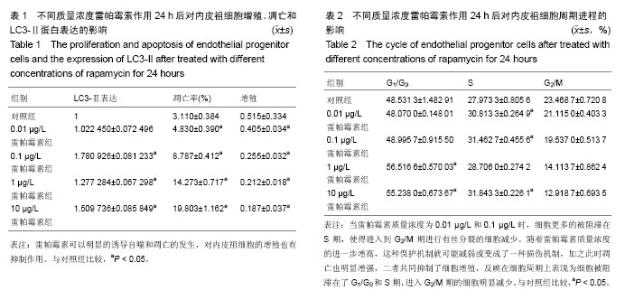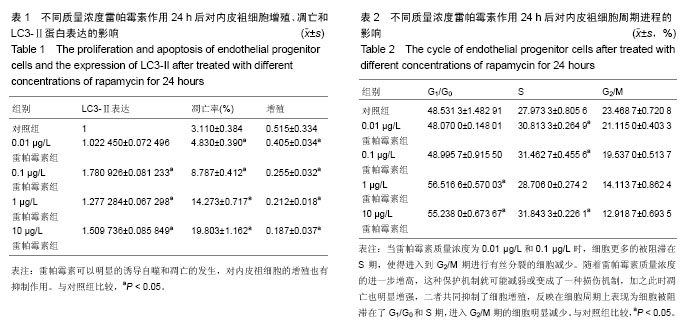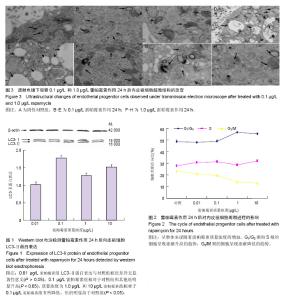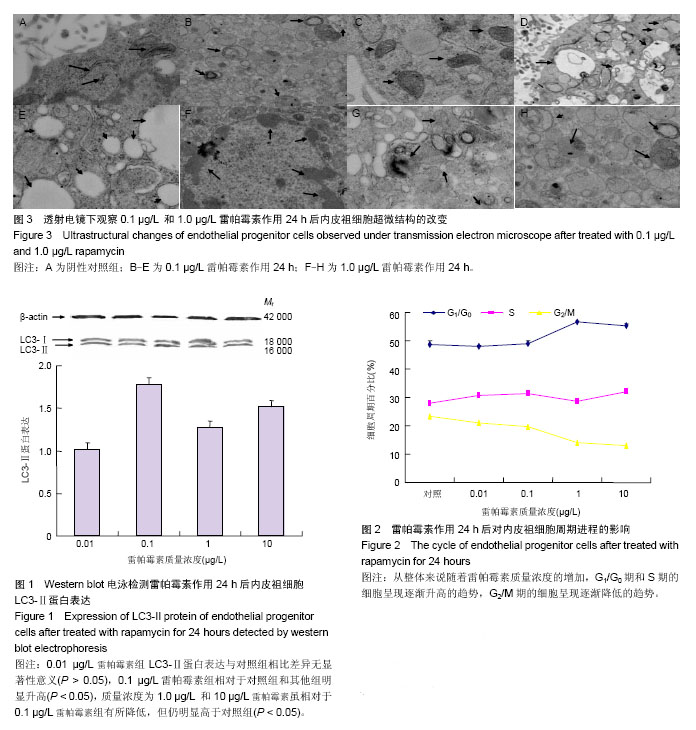Chinese Journal of Tissue Engineering Research ›› 2015, Vol. 19 ›› Issue (1): 67-71.doi: 10.3969/j.issn.2095-4344.2015.01.012
Previous Articles Next Articles
How does autophagy activation affect the apoptosis, proliferation and cycle of endothelial progenitor cells in rats?
Liu Hui1, Li Xiao-qiang2, Zhu Ren-da2, Meng Qing-you2, Lu Hui-jun1
- 1Department of Vascular Surgery, Wuxi People’s Hospital Affiliated to Nanjing Medical University, Wuxi 214023, Jiangsu Province, China
2The Second Affiliated Hospital of Soochow University, Suzhou 215004, Jiangsu Province, China



